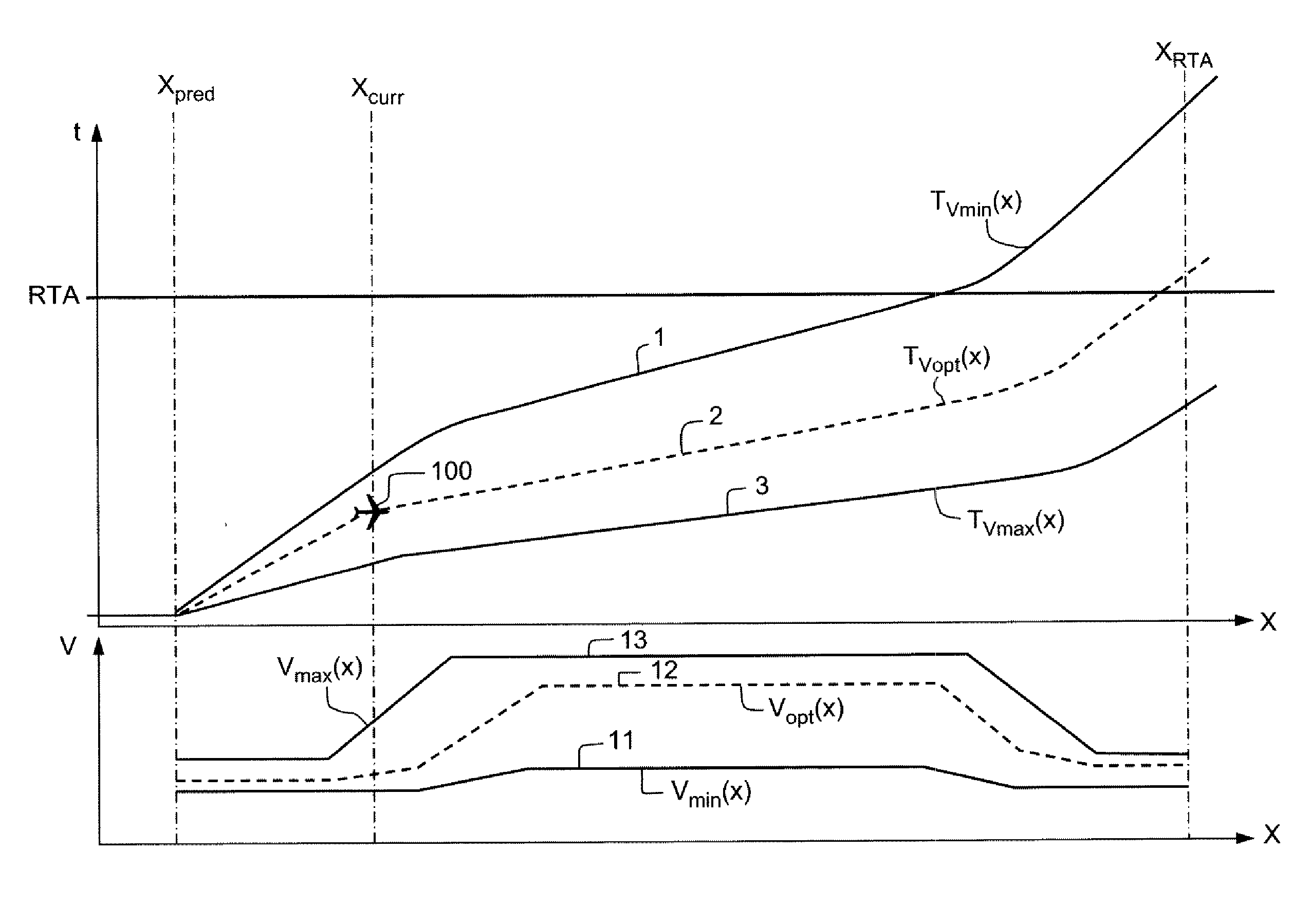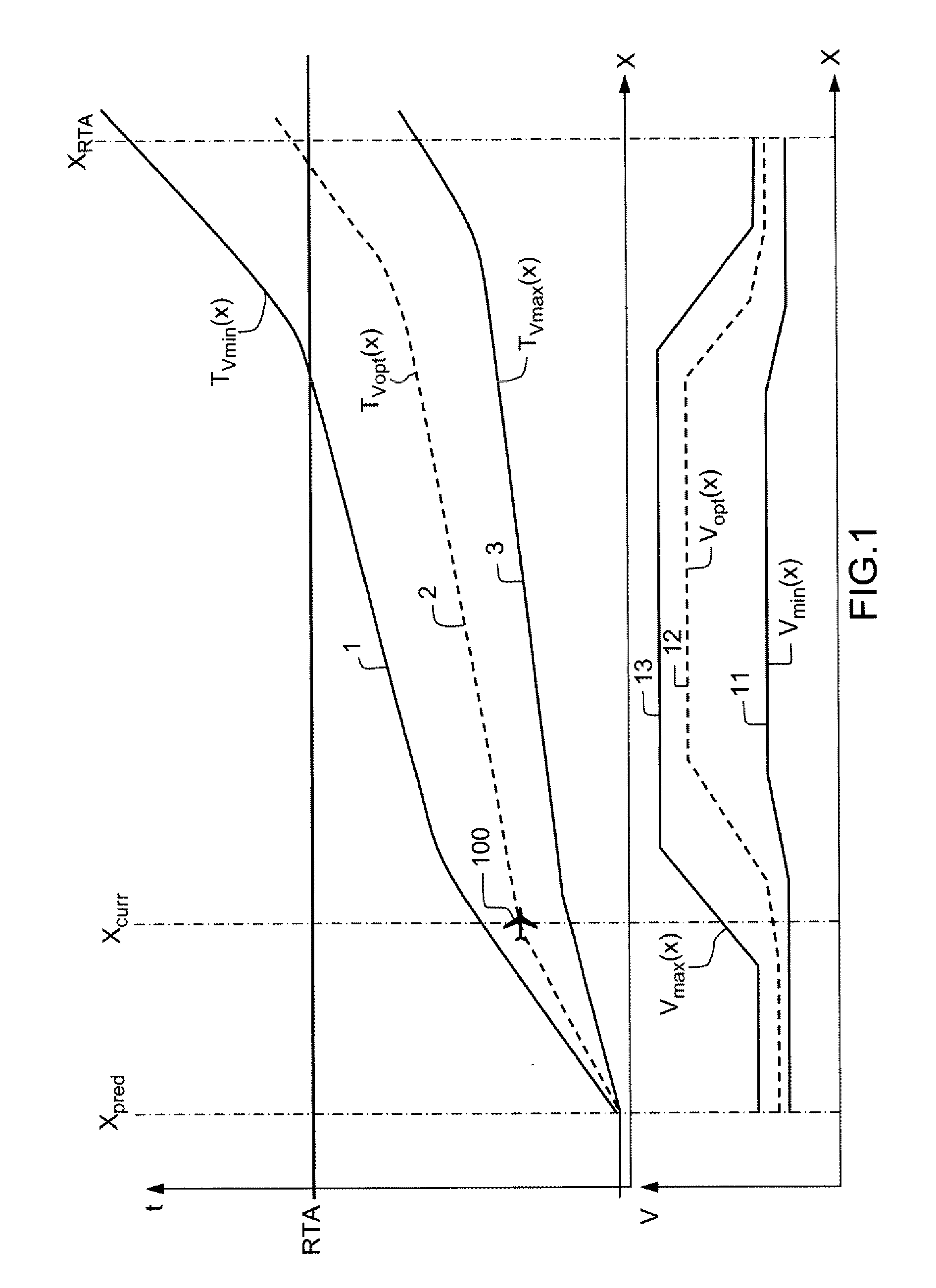Method for Continuously and Adaptively Generating a Speed Setpoint for an Aircraft to Observe an RTA
a technology of setpoints and aircraft, applied in the direction of process and machine control, instruments, navigation instruments, etc., can solve the problems of difficult convergence of index calculation and difficulty in sufficiently responsive compensation for any drift, and achieve the effect of sufficient margins
- Summary
- Abstract
- Description
- Claims
- Application Information
AI Technical Summary
Benefits of technology
Problems solved by technology
Method used
Image
Examples
Embodiment Construction
[0038]FIG. 1 shows examples of curves representing the times of passage of an aircraft at curvilinear abscissae along its flight plan, for flights following different speed profiles.
[0039]Hereinafter, the letter X designates the curvilinear abscissa of an aircraft 100, along a flight plan, that is to say, a distance between a point of the flight plan and a reference point of the flight plan. A prediction of the time of passage T(X) of the aircraft 100 at the curvilinear abscissa X is made at an abscissa point Xpred.
[0040]A first curve 1 represents the times of passage ETA_Vmin(X) of the aircraft 100 according to the curvilinear abscissa X, assuming that the latter is moving according to a minimum speed profile Vmin(X) corresponding to the lower limit of the flight envelope along the profile, possibly augmented by an operational margin in order, for example, to limit acceleration inertia at low speeds or even the temporary risks of excessively low speed generated, for example, by win...
PUM
 Login to View More
Login to View More Abstract
Description
Claims
Application Information
 Login to View More
Login to View More - R&D
- Intellectual Property
- Life Sciences
- Materials
- Tech Scout
- Unparalleled Data Quality
- Higher Quality Content
- 60% Fewer Hallucinations
Browse by: Latest US Patents, China's latest patents, Technical Efficacy Thesaurus, Application Domain, Technology Topic, Popular Technical Reports.
© 2025 PatSnap. All rights reserved.Legal|Privacy policy|Modern Slavery Act Transparency Statement|Sitemap|About US| Contact US: help@patsnap.com



